 Although in-ear bud headphones are all well and good for strutting down the street with your iPod/PDA/smartphone in your pocket, when it comes to DJing or listening at home, you might need something a little more substantial.
Although in-ear bud headphones are all well and good for strutting down the street with your iPod/PDA/smartphone in your pocket, when it comes to DJing or listening at home, you might need something a little more substantial.
If you’ve got deep pockets (and don’t mind looking like Biggles coming back from a WW2 mission), you can’t go wrong with the amazing Grado SR60 headphones (review June 2005), but if you’re looking for something cheap and cheerful, the Panasonic DJ100 headphones are worth a look.
Optimistically described as ‘professional’ headphones (yeah, right), the silver and black closed-ear headset is more of the cheap’n’cheerful variety, although the build quality seems pretty reasonable for a street price of around £18.
In case you’re not sure what this ‘closed-ear’ stuff is all about, it means that the headphones completely cover yer lug’oles, and thus reduce extraneous sounds interfering with your music.
 Designed for DJs
Designed for DJs
You’ll note the headphones describe themselves as being for DJs – this is due to their closed ear construction (a bit of a must for monitoring in noisy environments) and the fact that the individual earpieces rotate so you can listen to one earpiece without having to put the headphones on your head.
If looking like a DJ isn’t your thing, the ‘cans’ (as those in the music biz like to call them) felt comfortable enough when worn ‘normally’ with enough travel on the plastic extending headband to cover head sizes from a pinhead skinhead to a beehived big ‘ead.
There’s also a generous length of cable supplied with the ‘phones (around 2 metres) with a gold plated 2.5mm jack plug and 3.5mm adapter supplied.
A particularly nice touch is that the Panasonic RP-DJ100’s can fold up into an impressively small space, so that you can wedge them into your record bag or laptop case.
 The sound
The sound
Naturally, at this price level you’re not going to get anything approaching hi-fi, but the RP-DJ100’s produced a sound that was neither too harsh or too overbearing, with the XBS Extra Bass System adding a bit of oomph which might come in useful when listening through a cheapo MP3 player.
The Panasonics were also capable of knocking out pretty loud volumes without too much distortion which is an essential attribute for Djing.
The verdict
Considering their build and price level, we were all set to give the Panasonic RP-DJ100’s top marks until the things let us down at a gig, when both channels cut out.
After some investigation, it seemed the phones had suffered the all-too-familiar problem of a dodgy jackplug, where the wiring had worked loose inside.
No problem we thought -let’s whip out the soldering iron and do a quick on the spot repair.
Annoyingly, once we’d removed the jack, ready for replacement, we found out that Pansonic were using the chuffing annoying lacquer coating cables (popular with Sony models), which are a ruddy pain to solder (see Headwize.com for solutions).
 So after our own (paid for) headphones conked out after just four months and with no chance of a replacement after voiding our guarantee with the attempted emergency repair, we’ve had to rapidly downsize our enthusiasm.
So after our own (paid for) headphones conked out after just four months and with no chance of a replacement after voiding our guarantee with the attempted emergency repair, we’ve had to rapidly downsize our enthusiasm.
We certainly wouldn’t recommend them for working DJs as we don’t think they’re up to the job. After all, if you’re serious about your playing, it’s defintely worth paying the extra for a robust, high quality pair. However, for bedroom-bound disk-spinners and iPodders on the move, they might be worth a look. So long as you treat them gently.
Looks 65%
Sound quality 60%
Build quality 50%
Overall 55%
Panasonic RP-DJ100 Specs:
XBS Extra Bass System
Travel fold design
28mm driver unit
Response bandwidth 14 – 24000 Hz
Sensitivity* 102 dB/mW
Impedance 24 Ohm
Diaphragm 1.1 in
Magnet Type Neodymium Rare-earth magnet
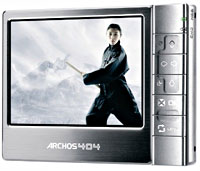 Details are still a little murky on this one, but some information on the upcoming range 404, 504, and 604 PMP devices are bubbling on up on t’internet.
Details are still a little murky on this one, but some information on the upcoming range 404, 504, and 604 PMP devices are bubbling on up on t’internet. Accessories ahoy
Accessories ahoy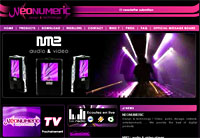 A French company with the tongue twisting nomenclature of Neonumeric has released details of their NTG-1 portable media player.
A French company with the tongue twisting nomenclature of Neonumeric has released details of their NTG-1 portable media player.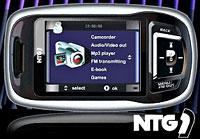 The 107 x 62 x 21mm player can also play back MP3, WMA and WAV audio files, and there’s also a built-in FM tuner, 512MB of internal memory and a SD/MMC card slot for shunting in your own memory.
The 107 x 62 x 21mm player can also play back MP3, WMA and WAV audio files, and there’s also a built-in FM tuner, 512MB of internal memory and a SD/MMC card slot for shunting in your own memory. Pricing is still to be confirmed, although we’re looking at something between $250 to $300, and we’ve no idea of availibility yet.
Pricing is still to be confirmed, although we’re looking at something between $250 to $300, and we’ve no idea of availibility yet.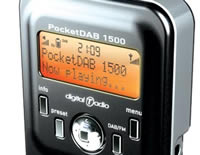 We’re big fans of Pure Digital and their seemingly endless mission to push the features and functions of DAB radios. Their latest move is to launch a new portable DAB radio.
We’re big fans of Pure Digital and their seemingly endless mission to push the features and functions of DAB radios. Their latest move is to launch a new portable DAB radio.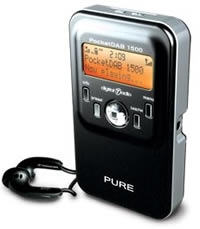 Recognising that what they’re selling is audio quality, Pure have done a deal with Sennheiser to have Sennheiser’s MX300 headphones included in the package.
Recognising that what they’re selling is audio quality, Pure have done a deal with Sennheiser to have Sennheiser’s MX300 headphones included in the package.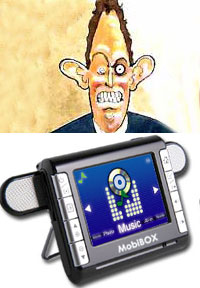 Smaller than a pack of cards and packed with enough whizz-bang functionality to keep a hyperactive cokehead entertained for hours, MobiBox’s new MP410 multimedia recorder and player packs a big punch for the price.
Smaller than a pack of cards and packed with enough whizz-bang functionality to keep a hyperactive cokehead entertained for hours, MobiBox’s new MP410 multimedia recorder and player packs a big punch for the price.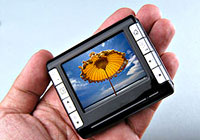 The MP410 also features a pair of folding out speakers for added ‘Tony Blair’ appeal, and comes with a pull-out stand for desk viewing.
The MP410 also features a pair of folding out speakers for added ‘Tony Blair’ appeal, and comes with a pull-out stand for desk viewing.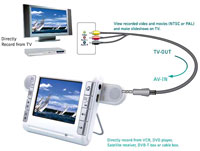 Interface 2 in 1 MiniUSB (USB 2.0/power in)
Interface 2 in 1 MiniUSB (USB 2.0/power in) Although in-ear bud headphones are all well and good for strutting down the street with your iPod/PDA/smartphone in your pocket, when it comes to DJing or listening at home, you might need something a little more substantial.
Although in-ear bud headphones are all well and good for strutting down the street with your iPod/PDA/smartphone in your pocket, when it comes to DJing or listening at home, you might need something a little more substantial.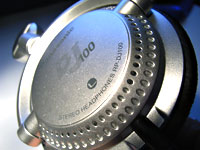 Designed for DJs
Designed for DJs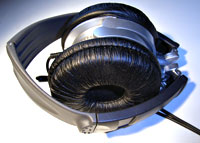 The sound
The sound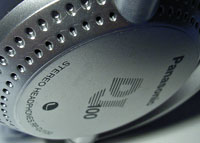 So after our own (paid for) headphones conked out after just four months and with no chance of a replacement after voiding our guarantee with the attempted emergency repair, we’ve had to rapidly downsize our enthusiasm.
So after our own (paid for) headphones conked out after just four months and with no chance of a replacement after voiding our guarantee with the attempted emergency repair, we’ve had to rapidly downsize our enthusiasm. More often than not, the in-ear headphones that come bundled with MP3 players are weedy affairs, producing a feeble floppy fart of a low end when you’re looking for a thunderous bass.
More often than not, the in-ear headphones that come bundled with MP3 players are weedy affairs, producing a feeble floppy fart of a low end when you’re looking for a thunderous bass. The human ear can only hear frequencies around 20 to 20,000 Hz, and that’s only when you’re young and healthy.
The human ear can only hear frequencies around 20 to 20,000 Hz, and that’s only when you’re young and healthy. This improved the sound no end, and the ‘phones are great for using on planes and trains when you want to hear as little exterior noise as possible and don’t fancy forking out for expensive noise cancelling units.
This improved the sound no end, and the ‘phones are great for using on planes and trains when you want to hear as little exterior noise as possible and don’t fancy forking out for expensive noise cancelling units.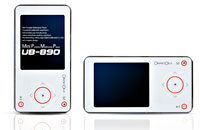 Lined up on the new product runway and awaiting clearance for take off is the slick looking Oracom UB890 portable media player.
Lined up on the new product runway and awaiting clearance for take off is the slick looking Oracom UB890 portable media player.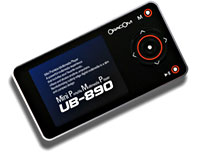 There’s also built in equaliser and 3D sound and onscreen visual effects to keep the easily-bored entertained.
There’s also built in equaliser and 3D sound and onscreen visual effects to keep the easily-bored entertained. Rounding off the gadget-fest, there’s also an alarm clock, sleep timer, built-in speakers (500mW + 500mW) and an iPod-esque ‘Touch Sensor Key Pad’ for shimmying through the menus.
Rounding off the gadget-fest, there’s also an alarm clock, sleep timer, built-in speakers (500mW + 500mW) and an iPod-esque ‘Touch Sensor Key Pad’ for shimmying through the menus.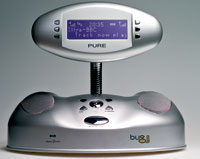 It might look like a weird mutation between Dr Who’s K9 and and the wobbly robot from Lost In Space, but we like the fact that PURE Digital’s new Bug TOO DAB radio is brave enough to stand out from the current crowd of wood’n’plastic identikit DAB radios.
It might look like a weird mutation between Dr Who’s K9 and and the wobbly robot from Lost In Space, but we like the fact that PURE Digital’s new Bug TOO DAB radio is brave enough to stand out from the current crowd of wood’n’plastic identikit DAB radios.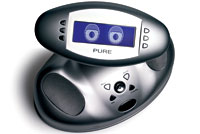 This usefully displays artists names, song titles, news, sports results and other information, with the EPG feature offering programme information and schedules.
This usefully displays artists names, song titles, news, sports results and other information, with the EPG feature offering programme information and schedules.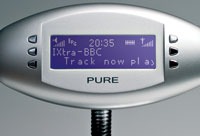 There’s also alarm, sleep and timer record functions – including an MP3 alarm – so the Bug TOO could be a handy bedside radio. We’re not quite sure why anyone would want 20 configurable alarms though, but if that’s what you’re after, the Bug’s got ’em.
There’s also alarm, sleep and timer record functions – including an MP3 alarm – so the Bug TOO could be a handy bedside radio. We’re not quite sure why anyone would want 20 configurable alarms though, but if that’s what you’re after, the Bug’s got ’em.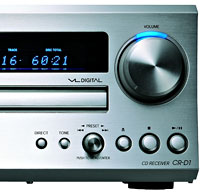 New from Onkyo is the CR-D1, a natty mini Hi-Fi CD/FM receiver with options to control docked iPods (volume/stop/start etc) and wirelessly stream music from PCs.
New from Onkyo is the CR-D1, a natty mini Hi-Fi CD/FM receiver with options to control docked iPods (volume/stop/start etc) and wirelessly stream music from PCs. When it comes to expansion options, this fella’s well stacked, offering 1 x optical, 3 x RCA, and stereo mini-jack inputs and 1 x optical, 2 x RCA, subwoofer, and headphone outputs.
When it comes to expansion options, this fella’s well stacked, offering 1 x optical, 3 x RCA, and stereo mini-jack inputs and 1 x optical, 2 x RCA, subwoofer, and headphone outputs.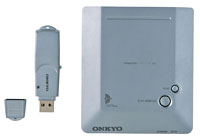 Specifications
Specifications LG Electronics has rolled up its beefy sleeves, raised its fists and shouted, “Come oooonnn!!!! Let’s be ‘aving you!” to the electronics world, declaring its intent to more than double its share of the world’s top products by 2010.
LG Electronics has rolled up its beefy sleeves, raised its fists and shouted, “Come oooonnn!!!! Let’s be ‘aving you!” to the electronics world, declaring its intent to more than double its share of the world’s top products by 2010.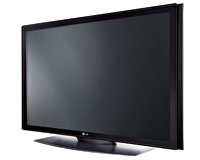 With a direct hit on the spittoon, he continued, “By substantially increasing the number of flagship goods through our technological prowess, we aim to evolve into a bona fide powerhouse.’
With a direct hit on the spittoon, he continued, “By substantially increasing the number of flagship goods through our technological prowess, we aim to evolve into a bona fide powerhouse.’ Pointing aggressively, Myung-wo says he wants the global market for plasma display panel (PDP) modules, PDP TVs, liquid crystal display (LCD) TVs, side-by-side refrigerators, built-in air conditioners and drum washers to be pwned by LG.
Pointing aggressively, Myung-wo says he wants the global market for plasma display panel (PDP) modules, PDP TVs, liquid crystal display (LCD) TVs, side-by-side refrigerators, built-in air conditioners and drum washers to be pwned by LG. Similarly, when it comes to domestic air conditioners, LG rules the roost, and the company is now wrestling for the crown of King of Flat-Panel Displays, knocking out 730,000 plasma units last year to nudge past market leaders Samsung SDI.
Similarly, when it comes to domestic air conditioners, LG rules the roost, and the company is now wrestling for the crown of King of Flat-Panel Displays, knocking out 730,000 plasma units last year to nudge past market leaders Samsung SDI.